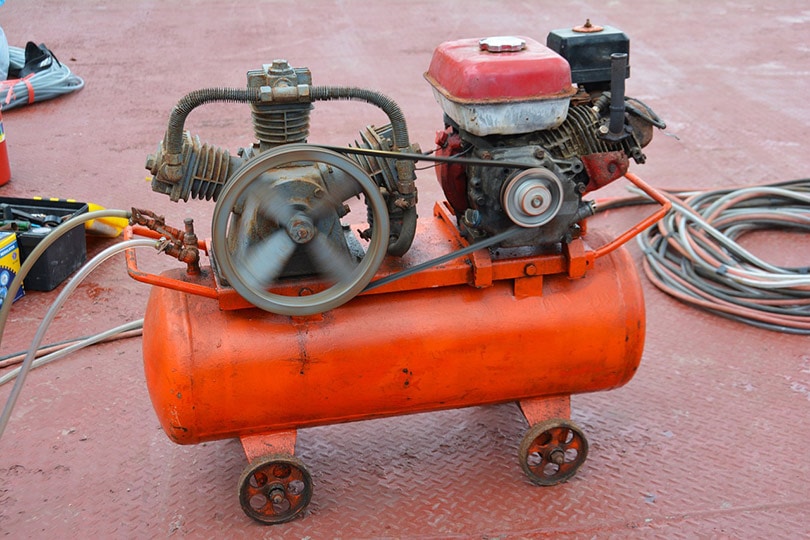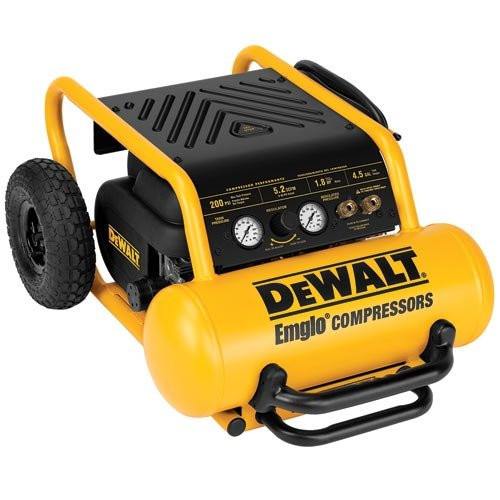What Size Air Compressor Do I Need?
-
Pete Ortiz
- Last updated:

Air compressors come in many shapes and sizes, and choosing the right one for your needs can be a challenge. Horsepower, PSI (Pounds per Square Inch), gallon size, and CFM (Cubic Feet per Minute) can all play a role in getting the most from your machine, but the most important factor is how you’ll be using your compressor. If you use larger air-powered tools, you may need a bigger tank to keep up with the air demands. If you’re using smaller tools or filling tires at home, a smaller tank may be fine. We’ve broken down some of the common uses for air compressors below to help you determine which size and specs are best for you.
What Is CFM?
Gallon size and CFM are essential factors in choosing an air compressor. CFM, or cubic feet per minute, is the volume of air moving through your compressor as you use it. If the CFM is too high, your compressor’s air will drain too fast, and you’ll have to stop working while it refills. If it’s too low, you won’t have enough power for your tools. To determine the CFM you’ll need, look at your tool’s CFM requirements, then multiply by 1.5 to determine the capacity you need from your air compressor.
What Size Do You Need for Tires?
A simple 3- to 6-gallon tank is fine for home use, and a CFM of 2-3 is perfect for the continuous air dispersal needed to fill a tire. The small tank size is also ideal for portability. An air compressor of this size is great for smaller-sized air tools. Check out Best Pancake Air Compressors for the perfect buyer’s guide.
What Size Do You Need for Air Tools?
An 8-10 gallon tank is perfect for most air tools for the best performance. Aim for 3-5 CFM, as well. While these are generalized sizes for various tasks, different tools can require different specs. We have included the ideal air compressor size for the three common air tools below.
Impact Wrench
You’ll be gulping a lot of air if you’re using an impact wrench, so you’ll want a decent tank size and a stronger CFM. Aim for around 6 gallons and 5 CFM for the best performance. Check our Best Air Compressors for Impact Wrenches page for our top picks to help you decide what to purchase.
Nail Gun
This is another air gulper. You will likely be nailing rapidly and need a good tank. Aim for 5-6 gallons and around 5 CFM. Check out our Best Air Compressors for Nail Guns page for the best nail gun options this year.
Air Ratchet Tool
You can get away with a little less here. Aim for 3-4 CFM and 5-6 gallons for the best performance. Check the CFM specs on your air ratchet to ensure you have the right CFM to get the best performance from your tool.
What Size Do You Need for Painting?
It’s best to use a larger tank for professional painting jobs. If you’re planning on spraying the inside or outside of a house, staining a fence, or painting a car, you’ll be using almost constant air. Of course, painting a house is a much bigger job than painting a car, so the size you need will differ.
Home Painting
For the best results, use a compressor with a 5-6 CFM capacity. Because you’ll be spraying nearly constantly, a larger, 10-gallon tank will keep you from waiting for the compressor to refill every few minutes.
Painting a Car
You’ll still need plenty of air capacity for car painting. Because of the smaller surface area, you can get away with a 6- to 8-gallon tank, but a larger tank will ensure you won’t have to pause while the tank fills. Aim for 5-6 CFM for the best performance.

A Few Final Words
For this article, we’ve focused primarily on the CFM and tank size because air compressors are typically already built with the right ratios of horsepower and PSI for good performance. You shouldn’t have to worry about factoring these in unless you have more specialized needs. As with any power tool or machine, it’s a good idea to wear ear protection while using an air compressor. Some models reach high decibel ranges that can damage your hearing. Before purchasing an air compressor, consider how portable you need it to be. A larger tank will always weigh more and require more space to store. We hope this guide has helped you determine which air compressor meets your needs.
- Related Read: How much should you actually pay for an air compressor?
Featured Image Credit By: terimakasih0, Pixabay
Contents





